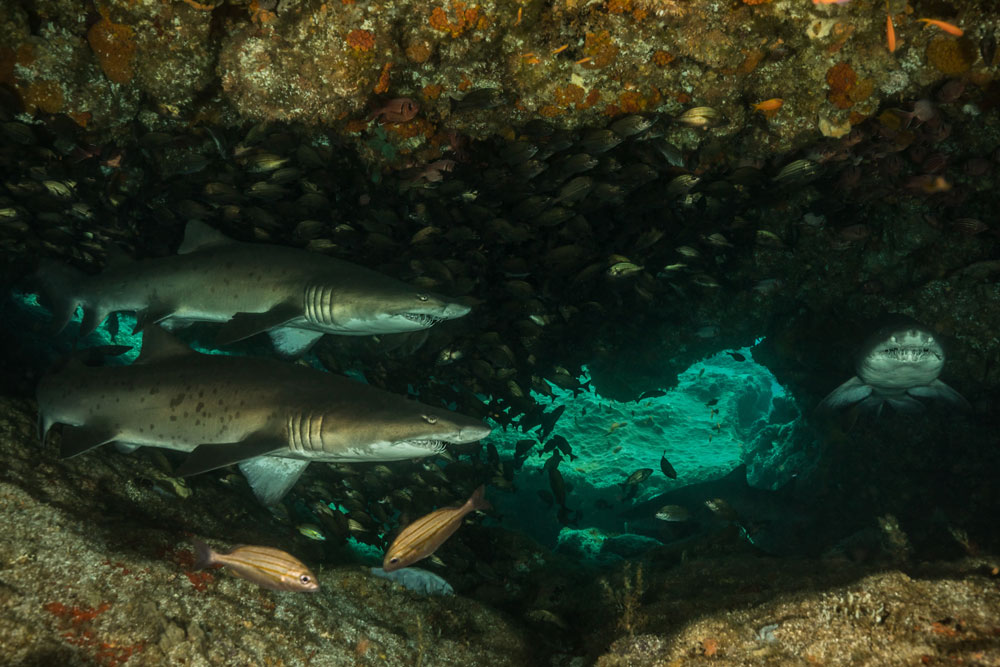
Socorro Island Liveaboard Diving Adventures
A liveaboard trip to Socorro Island offers divers an unparalleled opportunity to dive with some of the ocean's largest and most majestic creatures. With a range of liveaboard options available, from budget-friendly to luxury vessels, there's a Socorro experience for every taste and budget.
About Socorro Island Liveaboard Diving
A Socorro Island liveaboard isn't just about ticking a dive site off a list; it's an immersive experience into the wild oceanic world.
The clear waters around Socorro Island are a sanctuary for giant Pacific manta rays, which are known for their curious interactions with divers. Playful pods of dolphins, as well as numerous shark species including hammerheads and silkies, are regulars here, while the lucky diver might also spot whale sharks and the elusive humpback whales during their migration period.
Dive Sites of Socorro Island
Each dive site of Socorro Island liveaboard has its own unique allure. From the manta cleaning stations at San Benedicto to the shark encounters at Roca Partida, divers can explore a variety of underwater landscapes. The volcanic terrain creates an underwater playground of caves, arches, and steep walls teeming with life, guaranteeing every dive is an adventure in itself.
Traveling to Your Socorro Island Liveaboard
The journey to Socorro is part of the Mexico liveaboard adventure, beginning with a flight to either Cabo San Lucas or San José del Cabo. From there, you'll transfer to the marina and step aboard your liveaboard vessel. The 24-hour sail to the archipelago is the perfect opportunity to meet fellow divers, check your equipment, and get briefed on the exciting days ahead.
Best Time To Visit Socorro
The best time to visit Socorro Island for diving is during the window between November and May, with these months providing the optimal conditions for underwater visibility and marine life encounters.
November to December
The beginning of the season is characterized by the arrival of the giant Pacific manta rays and numerous shark species including silky, Galapagos, and hammerheads. Water temperatures are still relatively warm from the summer months, and the visibility begins to improve as the plankton blooms of the warmer months dissipate.
January to April
This period is often regarded as the highlight of the Socorro diving season. Humpback whales migrate to these waters to breed and calve, providing divers with the chance to hear their haunting songs and possibly encounter these majestic creatures underwater. The presence of the humpback whales is one of the most unique attractions of Socorro Island during these months.
May
The end of the high season can still offer excellent diving, with continued good visibility and warmer waters. While the humpback whales start to move on, the manta rays and shark activity remains high.
It's important to note that the Socorro Islands are located in an area that can be affected by the North Pacific hurricane season, which typically runs from June to October. During this time, the seas can be rough, and the visibility can be reduced due to the increased plankton and nutrient levels brought in by the storms, which is why most liveaboards don't operate in this period.
When planning a trip to Socorro, divers should also consider the moon phase, as some believe that shark behavior can be more active around the full moon. However, this is more anecdotal than scientifically proven.
Preparation Tips for Divers
A Socorro Island liveaboard trip is suited for the more experienced diver due to the challenging conditions and depths of the dive sites. Strong currents and the open ocean environment demand good buoyancy control and experience with large pelagics. Ensure your certification is up to date, and consider advanced training to make the most of your trip.
We're Here to Help 24/7






